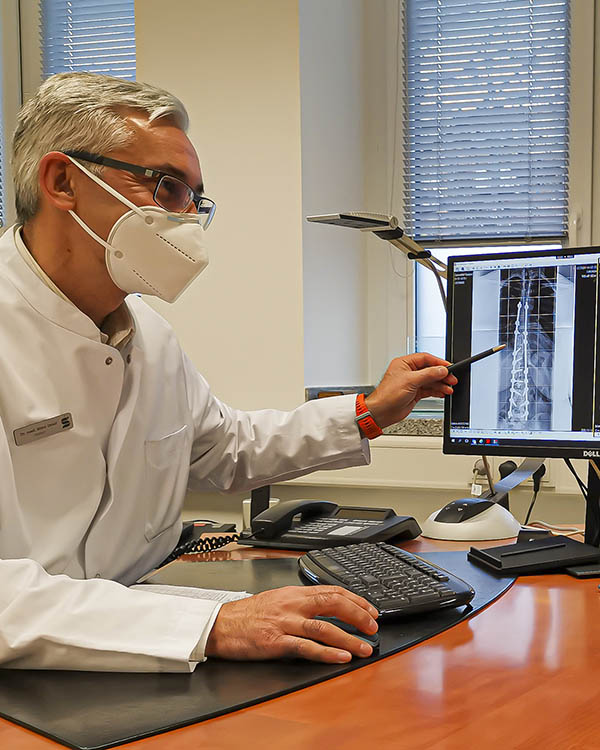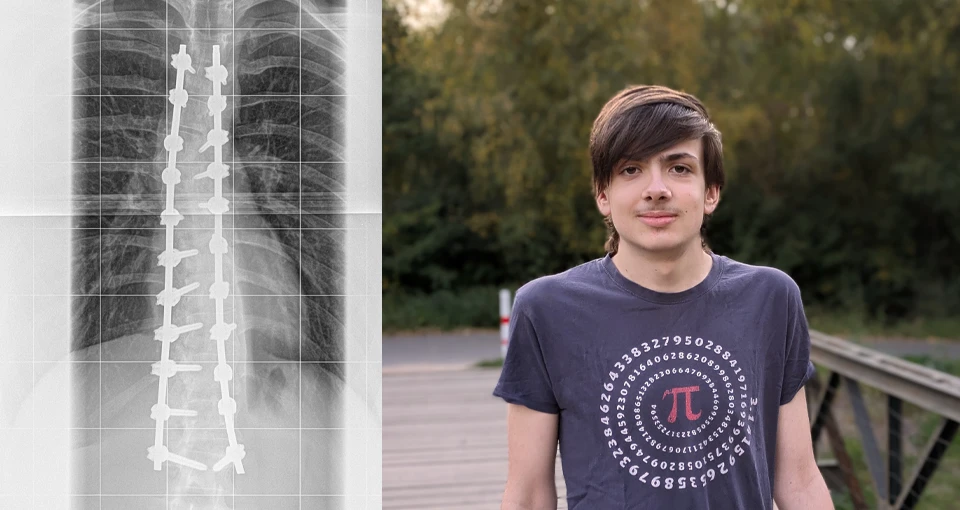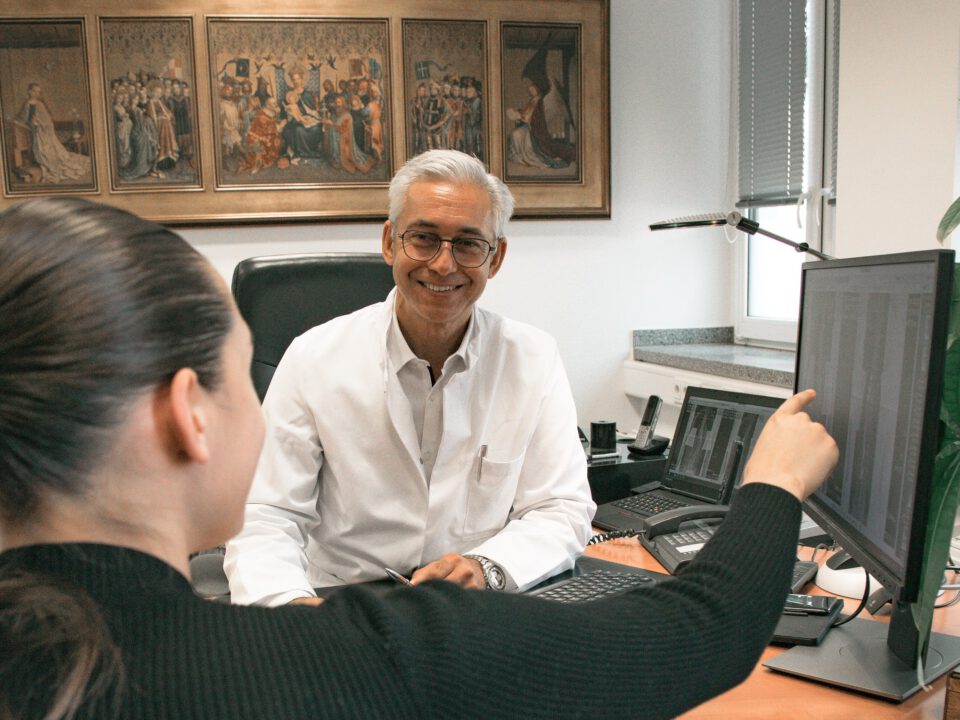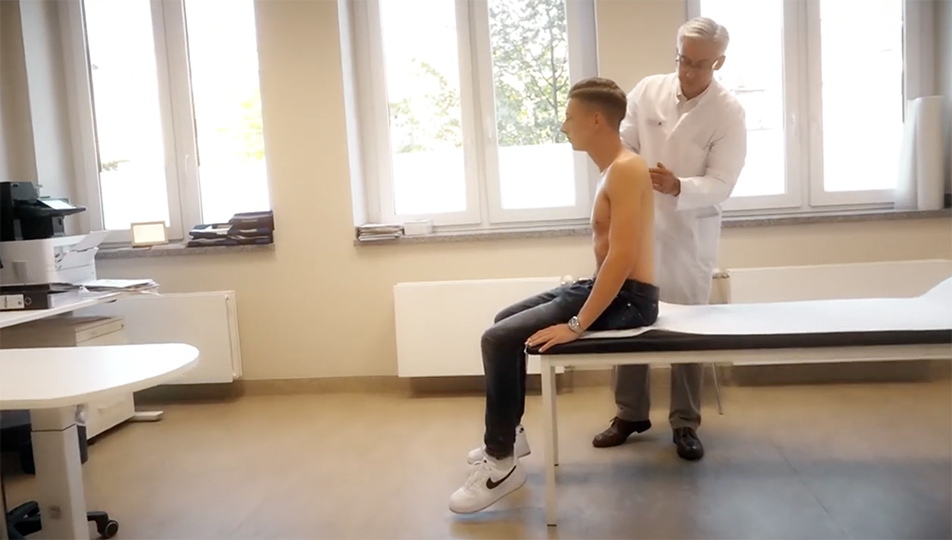
ApiFix: “Mom, you’ve grown up!”
'After long car rides, I had back pain every time and could barely get out of the car,' she recalls. But as she comes from a 'back diseased family', she didn't attach much importance to this finding. It wasn't until she started training to be a nurse at 18, and the pain from the strenuous activity was getting worse, that she went to see a doctor. He diagnosed a curvature of her spine, but without measuring it, and advised her: 'Do sport and gymnastics, there's no other option. You've got to live with it.' And so Justina Czarnetzki learned to come to terms with the pain that got worse and worse during her 17 years as a nurse, 10 of them in an intensive care unit. There were periods of improvement, especially when I was doing gymnastics regularly. But I couldn't always get through it," Czarnetzky recalled.
In her early 30s, she married and then family planning was on the agenda. "I knew that pregnancies were not good for my back, but we desperately wanted to have children," says Czarnetzki, who now lives with her family in Hamm in the Westerwald. At 35, she had Christian, now 9, followed by John, 7, and Sophie-Mathilde, 4. "Today I am happy and grateful for my children, but with each pregnancy I asked myself, "Why are you doing this?"" says Czarnettzki. The final crisis came with her third pregnancy, and in the last few months she could barely walk. 'I was in terrible pain. One shoulder was completely hanging down and from the back I looked like a question mark,' the mother-of-three said. After Sophie-Mathilde was born, things got even worse as the toddler was strenuous and had to be carried a lot.
"I sometimes felt like all my bones in my back were broken," Justina Czarnetzki recalled. Her doctor only prescribed physiotherapy, but in the end it was the turning point in this long history of suffering: The therapist took a look at her crooked back and immediately recommended a visit to a scoliosis specialist.
It was only at this time that Justina Czarnetzki began to deal with the disease picture of scoliosis. She did some research on the Internet and came across the page of the German Scoliosis Network. This page was very informative, and that's why I called the DSN. There I immediately had a contact person, who very quickly arranged an appointment at the Asklepios clinic in Braunfels," says Czarnetzki. There, she was thoroughly examined for the first time and measured: a 60-degree curvature in her lower back was detected. The doctor's clear recommendation: "You must have surgery." Together with her husband Bernd, who runs a GP practice as an internist, she decided to get two more opinions before making the decision and so Czarnetzki finally came to Dr Biren Desai at the Sana Trinity Hospital in Cologne.
"My husband had recommended this clinic to me as he had heard that it has a lot of expertise in the field of scoliosis treatment," Czarnetzki said. After intensive investigation, Dr. Desai confirmed his colleagues' diagnosis and recommended corrective surgery of the spine. "Dr. Desai took a lot of time and explained very well to me the risks and problems, but most importantly also the chances of surgery," Czarnettzki added. Desai took a great deal of time and explained the risks and problems to me very well, but also the chances of the surgery. He was always honest, and that helped me make the decision," said Czarnetzki.
On Oct. 26. In a four-and-a-half-hour operation, two metal rods with screws were attached to 12 vertebrae in the lower back, which were corrected, straightened and stiffened. At the same time, an acute herniated disc was operated. The complex procedure was uncomplicated and successful, as the curvature was reduced from 60 degrees to 16 degrees. The first few weeks after the operation were particularly difficult, however, as Justina Czarnetzki could only live on strong painkillers. But as her husband took over the post-operative care, the patient was able to leave the Sana clinic after just nine days. At home, she was greeted by her son Christian with the words: "Mummy, you've grown up." She has gained three centimetres in height as a result of the procedure.
Looking forward to my life without back pain
The healing process will take at least half a year. In that time, Justina Czarnetzki is not allowed to put any more strain on her back and can only lift a maximum of five kilos - not easy in a family with three children. "Fortunately, my children support me where they can, my husband takes care of a lot of things, and the health insurance funds us to help with household expenses," she says. With a physiotherapist coming into the house, she does light exercises to build muscle - that's all she's allowed at the moment. And so she practices patience - even if it's difficult at times. "I know there's still a long healing process ahead of me, but I'm glad the surgery went without complications and I'm looking forward to my life without back pain," Justina Czarnetzki beams.
This report was published in the Scoliosis Magazine of the DSN | German Scoliosis Network, 01/2021.




